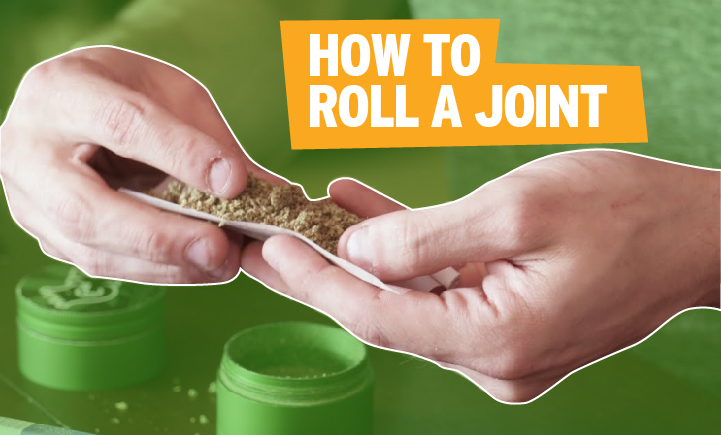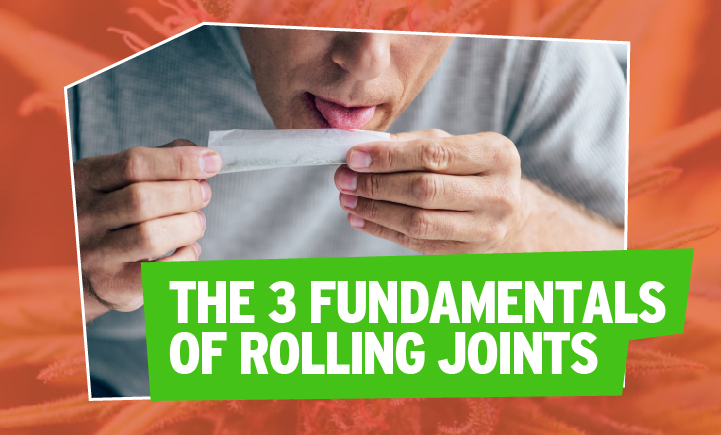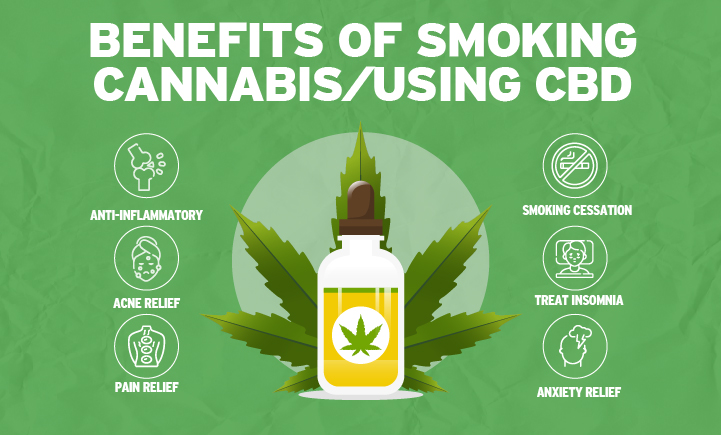
Whether you’re after a nice, fat cone or a classic, straight cigarette-style joint, all it takes to roll a solid, perfectly shaped joint is practice. In fact, even if you’re usually a bong fan or dabber, just about anyone can admire a perfectly rolled joint.
This step-by-step guide will explain exactly how to roll a classic joint (or pinner), how to roll a cone joint, and how to create a few other standbys. Get ready to share photos!

The 3 Fundamentals of Rolling Joints
- Rolling paper material and size both matter; choose the right ones for your needs
- Learning to roll a great joint will save you money on dispensary pre-rolls
- The difference between joints, blunts, and spliffs is what they’re rolled with, inside and out: joints are all cannabis rolled in paper; blunts are all cannabis rolled in cigar or cigarillo papers; spliffs are a cannabis tobacco mix.
Now let’s take it step by step:
Step 1: Lay out the rolling paper
Lay out the rolling paper on a flat surface such as a rolling tray, piece of paper to make the clean up and rolling process as easy as possible.
Step 2: Create and Place the Crutch
Crutches, sometimes called tips or rolling tips, establish the joint’s basic size and shape and ensure it’s an even, round cylinder. The crutch makes it easy to integrate the bud into the rolled cannabis by providing a stable area to hold the joint. Leave a bit of the crutch emerging from the open end of the rolling paper for later during sealing.
Make a crutch out of strong cardstock p aper, or thin cardboard like a business card if you didn’t get it from the tobacco store or head shop. Make a few accordion folds, and then roll the crutch so it’s as thick as you want your joint to be.
Step 3: Arrange the Bud
Arrange the ground bud as evenly as possible in the middle indent of the joint paper. Should you be working on a rolling tray? This is optional, but it does help you prevent losing precious bud, especially for beginners.
Step 4: Roll It Up This step is challenging and takes practice, so don’t give up if you don’t get it right away. The aim is to gradually move the paper between your fingers, back and forth, using gentle pressure and force over time to shape the bud without crushing it—either into that nice, straight pinner joint cylinder or the fat, sloping cone joint. Take this part of the joint rolling process slow until you’re feeling when it’s right or wrong as you go.
Step 5: Glue it Up
You want to ensure you have a tight roll because that gives you a smoothly burning joint. Initiate the tuck at the crutch using both thumbs, and eliminate all slack in the rolling paper by tucking the end of the paper while gripping the crutch.
Lick the glue strip to seal the rolled joint (this works through the paper as well). You can lick part of the paper closest to the crutch and seal it before doing the same with the glue strip at the end of the joint.
Step 6: Seal the Crutch
A little bit of the crutch should be visible outside the rolling paper as we mentioned earlier; now just make your roll tighter by pushing the clutch inward toward the rolled cannabis. Then lick and seal the rolling paper and crutch to help keep your joint in one piece.
Step 7: Pack the Tip
Your goal in packing the joint is to get it compacted, but not so tight that you restrict airflow and can’t get a proper draw. Here are a couple of options:
- Muzzle Load. You can add size to the joint this way. Muzzleloading means packing the tip of the joint with ground bud similar to how you’d load a musket. You need a tool to push and compress the bud into the tip of the joint.
- Drop. Just let gravity do the work: drop or tap the joint crutch down onto a hard surface. A few times is all you need.
Step 8: Twist and Seal
Twist the paper at the tip of the joint to seal it and voila! You have rolled a beautiful joint for a more enjoyable smoking experience.
Tips For Rolling Perfect Joints
There is a seemingly professional joint roller in every circle of friends who seems to be able to roll perfect pinners while driving, eating a burger, and putting on makeup (please, don’t do this). But assuming this isn’t you (and it’s none of us), here are some tips for rolling a perfect joint.
Use Good Rolling Paper
Wood pulp rolling papers taste terrible. Rice or hemp rolling papers taste much better. A hemp paper is easier for a beginner because it is generally easier to roll and stays lit more readily. For more experienced joint rollers after a precise roll and a slow, flavorless burn, there’s no substitute for rice papers.
Always Grind First
Grind your bud evenly first to roll a perfect joint, and we recommend the more consistent, smoother action of metal grinders where possible.
Use a Crutch
Always use a crutch. They serve as a mouthpiece optimizing airflow and preventing the end of the joint from turning soggy. They also allow you to smoke your joint to the very end.
How to Light Up
Most people have never learned to do this right, and it’s not the same as cigarettes because cannabis and organic raw hemp flower joints burn differently. To avoid the uneven “canoe” burn, rotate the joint gently, applying direct heat, and create a cherry on the tip of the joint.
CBD Joints: Is This a Thing?
Yes, they are! If you love the classic cannabis joint experience but don’t want a buzz, you can roll a jay with CBD-rich hemp flower.
How to Roll an Inside Out Joint
Eliminate excess paper the way they do in Europe by rolling an inside-out joint or backroll. Using less paper tastes better and burns more slowly, although it can take practice to roll this way.
Start by flipping the paper over rather than using the normal orientation, so the strip of glue is facing downward and closest to you. Arrange the bud and shape as normal.
Now it’s time to tuck the glue strip, which is in the opposite position compared to where it normally is. Make sure the tuck is slack-free and tight, because the glue strip is the only point of overlap, so there is less leeway for errors.
Lick the strip of glue through the rolling paper. If it works, you’ll be able to see the glue strip clearly through the paper. Remove any excess rolling paper.
If the glue strip comes undone, start over with fresh paper.
Cross Joint
The cross joint is two joints, a smaller one threaded through a larger one. The cross portion of the joint is the shorter piece and needs to be thin enough to fit through the larger, main joint. It may be easier to roll a larger joint for the main joint than to roll a tiny cross joint.
How to Add Extras
Cannabis extracts are readily available in lots of places, and fans are applying them to joints. Even if you’re not in a place where concentrates are legal, create your own by pressing the kief in your grinder or add federally legal CBD kief or CBD isolate for non-buzzy benefits or to take THC side effects down for first time users.
You can incorporate your concentrate of choice into the ingredients of your joint while you’re arranging them in many cases. If the concentrate is too sticky, you can apply it to the side of the paper in many cases. Heat it a bit for optimal stickiness.
The Difference Between A Joint, Spliff, And Blunt
What is a Blunt?
Joints are cannabis rolled with rolling paper, but a “blunt” is essentially a cannabis cigar, because it is cannabis rolled inside a tobacco leaf or a gutted cigar or cigarillo. The blunt is enough to share because it is supposed to hold anywhere from a half a gram to 1.5 grams of flower (although it may burn too quickly depending on how it’s rolled). Some people roll blunts in hemp blunt wraps for a tobacco-free blunt smoking experience.
What is a Spliff?
A spliff is a blended cannabis and high-quality rolling tobacco cigarette, generally rolled with even parts of each in cigarette paper. Since spliffs are rolled with high-quality cannabis and rolling tobacco, they offer the same enjoyable sensations of both cannabis and cigarettes. but don’t taste much like standard cigarettes—and taste much better.
It is best to grind the rolling tobacco and cannabis together for a smooth, even burning spliff. Tobacco and cannabis burn at different rates so just sprinkling tobacco on top of ground cannabis will produce an uneven burn. Once you grind them together, just roll them as normal.
Rolling Paper Guide
When you consider which rolling papers to use, think about burn rate, rolling difficulty, taste and smoke-ability, and environmental impact. Wood pulp paper is harsh and tastes terrible; we don’t recommend it. Here’s how hemp and rice paper stack up:
Hemp Papers
Burn rate: stays lit better than rice paper, but faster burning
Rolling difficulty: multiple thicknesses, but overall has more texture and thickness than rice paper, easier for joint rolling
Taste and smoke-ability: pleasant, mild taste, not too harsh
Environmental impact: the most environmentally-conscious option
Rice Papers
Burn rate: can be tricky to light and will go out if not constantly smoked, but slowest burn
Rolling difficulty: thin, smooth texture can be challenging for joint rolling
Taste and smoke-ability: little to no taste, mild
Environmental impact: environmentally-conscious but made with processed rice and can include additives
Rolling Paper Size Guide
Single Wide: typically 68 to 70mm by 34 to 36mm, these are the rolling papers at gas stations. They are small and hard to roll, but suitable for one smoker.
1¼”: The typical 1¼” paper measures 76 to 78mm by 45 to 48mm. 1¼” papers are the most popular size on the market today, holding about 25 percent more than a single. They can also be rolled into a cone shape easily and can be handled by a single large dose smoker or small groups of two or three people.
1½”: 1½” papers are usually 76 to 78mm by 60 to 62 mm and basically allow for fatter joints.
Double Wide: Just like they sound, these papers double the single wide capacity for very fat joints, but they aren’t very popular because they end up very papery.
King Size Rolling Papers: These are the largest standard size, usually 100 to 110mm by 55 to 60mm. King size papers also come in King Slims, which are narrower by +/-44mm. King size papers are best for three to five people, or two heavy smokers.

Final Thoughts on How to Roll a Joint
We hope this step-by step guide to how to roll a joint has been useful to you. Remember, in this case, practice really does make perfect—don’t give up!